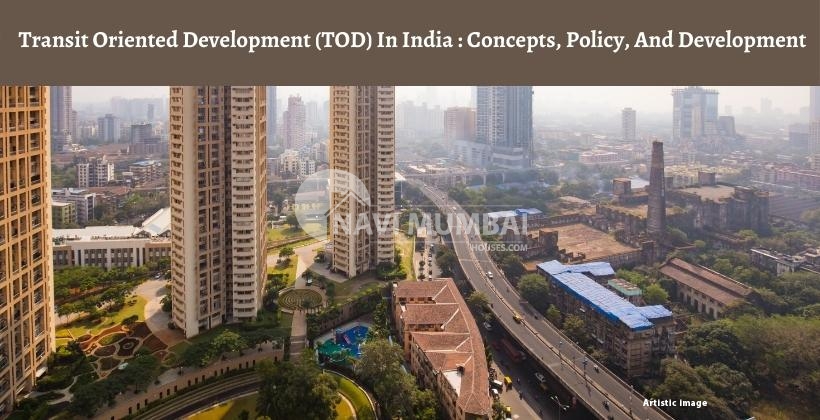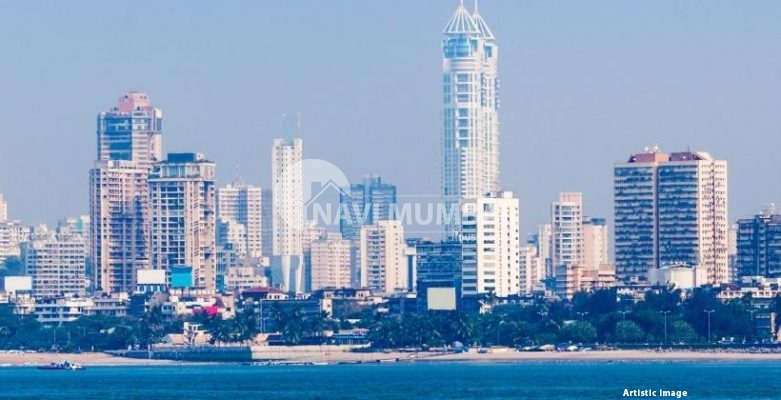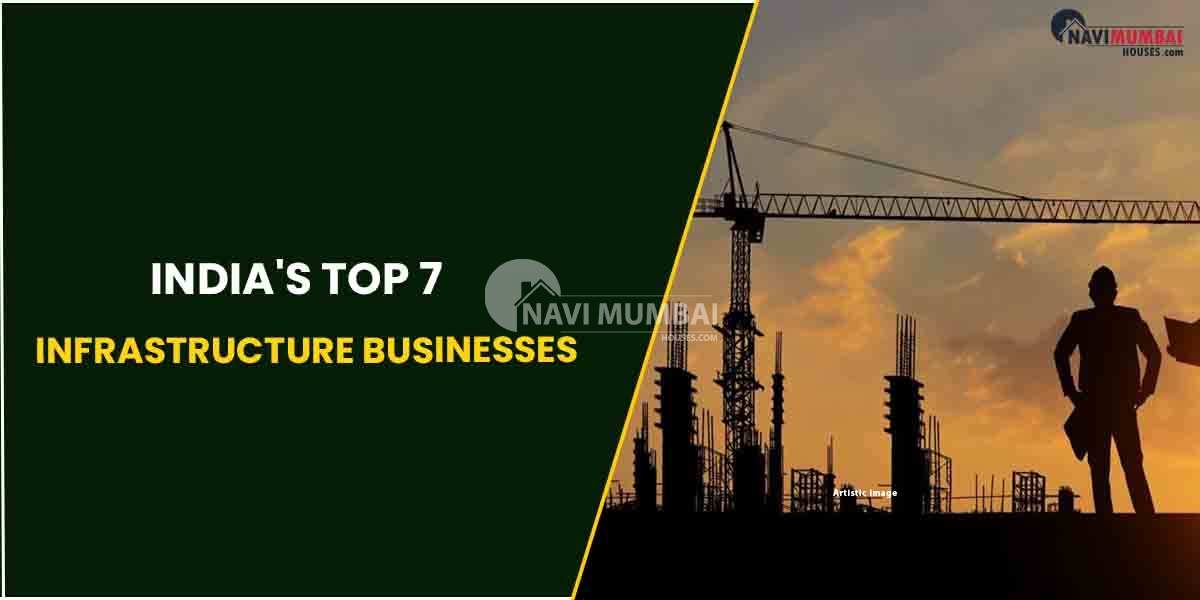
- February 23, 2022
- Uncategorized
Transit Oriented Development (TOD) In India : Concepts, Policy, And Development
Humans are always changing. Following in the footsteps of our devices and electronics, our cities are adopting a “smart” approach. The notion of Transit Oriented Development has emerged as a game-changer in the urbanisation process. Peter Calthorpe was the one who originally articulated the policy.

Are you looking for 3 bhk flat in kharghar for rent?
Definition, Concept, and Principles of Transit-Oriented Development
What does TOD: Definition entail?
The Transportation-Oriented Development concept, according to Peter Calthorpe, is “a mixed-use community that promotes people to live near transit services and reduces their reliance on driving.” In various places of the world, the notion has revolutionised the process of human settlement and civilization since then. Let’s look at these ideas and how they’ve influenced urbanisation and how we live. (With current Indian instances).
When Peter Calthorpe presented the concept of Transit-Oriented Development. He characterised it as an urban neighbourhood where all facilities are within walking distance and public transit is nearby. A Transit Oriented Development Zone is define as a place that is develop with Transit-Oriented Development ideas, concepts, and policies in mind.
TOD is a term that refers to a concept.
With the world’s population growing at an exponential rate. The government may struggle to offer services to all of its citizens. In this case, a city with a well-defined plan can assist the government in providing facilities that are convenient. High-rise development districts are planned and develop around adequate road connections. And near outstanding public transit networks under the Transit Oriented Development Policy. This guarantees that residential areas are constructed near public sites of interest in order to promote a walking culture. Simply said, it provides the best of both worlds by combining quick access to public transportation with high-density land use.
What is TOD: Principles and how does it work?
As previously said, a city designed with these Principles in mind would have adequate area to accommodate. A high population density and will be heavily reliant on a thriving public transportation ecology. It entails inexpensive housing alternatives with public facilities such as schools and hospitals. As well as low-cost transportation options. The TOD idea promotes a walking culture and decreases commute times to work. Resulting in increased personal and professional productivity. The following are important qualities of a society establish on these principles:
- To include pedestrians, create a walkable, high-quality ecology.
- For compactness, the highest dwelling densities will be erected in close proximity to transit nodes.
- To foster variety and growth, the destination should have mixed-use development.
- Ample parking facilities that are built and managedin accordance with the population density of the zone.
- Alternatives to public transportation that are both affordable and of high quality.
What Are the Advantages of TOD?
The creation of planned housing alternatives and mixed-use development around them helps to decrease traffic and sprawl while also promoting a better quality of life. The policy’s biggest immediate advantage is decrease traffic and carbon emissions, as these projects have a strong emphasis on reduced transportation. TOD successfully encourages a better lifestyle and lower transportation costs by fostering a walking culture. Savings on gasoline and transportation expenditures are aided by proximity to locations of civil interest and economical transit choices. As a result, there is a healthy economy and happy population.
It also efficiently handles several environmental and climate change issues. Reduced reliance on personal mobility for transit means reduced carbon emissions from fossil fuels. A Transit Oriented Zone is an area constructed and developed in accordance with these concepts. Reduced personal use of vehicles on a daily basis would result in much lower air and noise pollution. As well as a healthier environment for inhabitants of a Transit Oriented Zone.

What is the TOD Process, and How Can Transit-Oriented Development Be Implemented?
This is one of those procedures that is easier to imagine than to put into action. It necessitates the alignment or resonance of numerous elements such as housing development and infrastructure, street and road planning. Parking and transportation ecosystem implementation, design, reforms, and so on. This might take several years to accomplish since it needs agreement among a big and varied population. To be on the same page, many stakeholder with differing viewpoints and interpretations of the policy and idea will be requir.
When a town decides to establish a Transit Oriented Development zone, they must:
- Identifying major development opportunities and limits
- Create a master plan based on the vision.
- Create roadways, parking lots, and transportation and circulation alternatives.
- Creating and executing traffic patterns, as well as providing pedestrian support.
- Construct suitable housing near a transportation hub.
- Build in stages if you want to get the most bang for your buck.
The plan should be prepared on paper and opinions should be cross-checked before execution to ensure that all stakeholders are on the same page. Even a minor irregularity in the process might cause difficulties such as population sprawl.
India’s Transit-Oriented Development
India is a city that really needs to execute a planned strategy. With a fast rising urban population and dwindling facilities. India’s government has begun to focus on developing smart cities using a novel strategy. In May 2017, the government announced the National Transit Oriented Development Policy to aid the change. The National Transit Oriented Development Policy outlines how Indian governments might use these ideas as part of their urbanisation plan.
In addition, the government established a TOD standard to assess and rank cities based on their development. A TOD standard may be use for a variety of things. For starters, the government may use this criteria to categorise state growth into several areas so that it can be constantly monitor. The TOD standard also includes a summary of the existing set of principles that the zone intends to apply throughout time. The benchmark will be use by the government to determine how much money each state would receive for urban strategy development.
India has already taken the first step toward a smarter environment by enacting such a strict order legislation. Cities such as Ahmedabad and Delhi have already developed a TOD framework. Which their governments have begun to apply in stages. Let’s take a look at what’s new in India’s transit-oriented development and what’s on the horizon:
How Can Local Governments Get Start on Transit-Oriented Development Planning?
Before adopting any procedure, the most difficult task is to educate those who will be direct affect by it. The local government may educate individuals about the benefits of a smart city founded on these principles by establishing a common community goal. A regulatory structure and well defined policies that benefit citizens will also help. Aside from that, local governments should work in tandem with the federal government, and development should be multipurpose and adaptable to a diverse population. To begin, the government can levy an extra tax on inhabitants of development zones and fund the project accordingly in order to promote long-term growth in the area.
The landscape of our cities is changing as a result of transit-oriented development. To sustain the expanding population, our cities are emerging in a gradual and compact manner. With more urban areas and facilities. If you are seeking for a suitable property to rent or purchase in any of India’s developing or developed zones. We are confident that we can assist you. Choose from thousands of no-fee houses and get start right now. Simply click the link below to begin your search. If you require any more assistance or have any questions, please leave a comment below and we will respond as soon as possible.
You’re looking for Rent Homes in Navi Mumbai we have the best Rent homes in Navi Mumbai Like Ready to Move & Nearby possession: https://navimumbaihouses.com/property/search/rent/navi-mumbai-all/
If you want daily property update details please follow us onFacebook Page / YouTube Channel / Twitter




61 Comments
Great, thanks for sharing this article post.Really looking forward to read more. Really Cool.
Really appreciate you sharing this blog post.Really looking forward to read more. Really Great.
I loved your article post.Thanks Again. Will read on…
I truly appreciate this blog article.Much thanks again. Fantastic.
Hey, thanks for the post.Really thank you! Want more.
wow, awesome article post.
Hey, thanks for the blog article. Really Cool.
I really like and appreciate your post.Really looking forward to read more. Great.
I gave https://www.cornbreadhemp.com/products/cbd-sleep-gummies a whack at for the maiden time, and I’m amazed! They tasted distinguished and provided a sense of calmness and relaxation. My importance melted away, and I slept outstrip too. These gummies are a game-changer an eye to me, and I enthusiastically recommend them to anyone seeking unconstrained emphasis recess and better sleep.
Really informative post.Much thanks again. Keep writing.
I cannot thank you enough for the blog article. Fantastic.
Very neat blog post.Thanks Again. Really Cool.
Thank you for your article.Really thank you! Really Great.
Thank you ever so for you blog post.Much thanks again. Keep writing.
Very good article. Much obliged.
Im obliged for the article.Really looking forward to read more. Really Cool.
Many thanks, this site is very valuable. Algifast achat en France
You’re a really helpful site; could not make it without ya! ordina paricel online in Sardegna, Italia
I enjoy looking through your website. thnx! prezzo di dimenhydrinate apotex senza ricetta medica
Enjoyed every bit of your blog post.Thanks Again. Awesome.
Major thanks for the article post.Really looking forward to read more. Really Cool.
Thanks-a-mundo for the blog.Really thank you! Cool.
Fantastic article post.Thanks Again. Really Great.
Pingback: สมัครสมาชิก LSM99 พนันบอล ได้ 24 ชั่วโมง
Really informative blog.Really thank you! Keep writing.
Enjoyed every bit of your article post.Really thank you! Great.
I cannot thank you enough for the blog.Really thank you! Want more.
I really enjoy the article.Much thanks again. Great.
I really liked your blog article.Much thanks again. Great.
Pingback: Thai food nyc
I value the blog article.Really thank you! Cool.
Im thankful for the post.Really thank you! Really Cool.
Say, you got a nice article post.Really looking forward to read more. Awesome.
wow, awesome blog post.Much thanks again. Fantastic.
I really liked your article.Thanks Again. Great.
Major thankies for the article.Really thank you! Want more.
Looking forward to reading more. Great blog post.Much thanks again. Really Cool.
Very neat blog post.Really looking forward to read more. Much obliged.
Very informative blog article.Much thanks again. Fantastic.
I really like and appreciate your blog.Much thanks again. Awesome.
Really appreciate you sharing this blog post.
Thanks-a-mundo for the blog post.Thanks Again. Keep writing.
Great blog.Really looking forward to read more. Really Cool.
Very neat blog.Really looking forward to read more. Awesome.
A round of applause for your article.Really thank you! Fantastic.
I cannot thank you enough for the blog post. Fantastic.
I truly appreciate this blog post. Awesome.
I value the post.Really looking forward to read more. Fantastic.
Great article.Really looking forward to read more. Keep writing.
Muchos Gracias for your article.Really looking forward to read more. Much obliged.
Thanks-a-mundo for the post.Much thanks again. Will read on…
Really enjoyed this post. Keep writing.
Im grateful for the blog article. Really Cool.
Say, you got a nice blog article.Really looking forward to read more. Cool.
Looking forward to reading more. Great post.Much thanks again. Really Great.
Im thankful for the article.Thanks Again. Keep writing.
Appreciate you sharing, great article post.Really thank you! Fantastic.
Really enjoyed this article.Much thanks again. Cool.
I loved your blog.Much thanks again. Really Great.
I really liked your article post.Much thanks again. Want more.
I value the blog article.Really looking forward to read more. Really Cool.